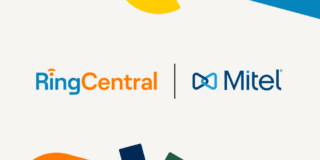Opinions expressed by Entrepreneur contributors are their own. We hear it all the time: Businesses are more...
Mitel Customers Migrating to UCaaS are Embracing RingCentral MVP—So Can You | #customersupport #supporticket
In November 2021, Mitel and RingCentral surprised the business communications world by forging an exclusive pa...
How to Turn Strangers into Loyal Customers With User Onboarding
Opinions expressed by Entrepreneur contributors are their own. User onboarding is the process that takes pe...
How Texting Customers Could Be the Engagement Tool You Need
Opinions expressed by Entrepreneur contributors are their own. As we head into the home stretch of the 2022...
RingCentral: The best-in-class migration path for Mitel cloud customers | #customersupport #supporticket
Zeus Kerravala, Founder and Principal Analyst, ZK Research, dives into how impactful the switch to RingCentral...
3 Predictions and Tips for Attracting Customers This Holiday Season
Opinions expressed by Entrepreneur contributors are their own. With the rise in energy prices, interest rat...
How to Create a Podcast Your Customers Will Actually Want to Listen To
Launching a podcast may seem like a great way to market your business and add value to your customers’ lives —...
3 ways customer service AI benefits customers and agents | #customersupport #supporticket
Highlights: Gartner predicts that by 2026, conversational customer service AI will reduce contact agent labor...
Putting Customers First | RingCentral | #customersupport #supporticket
Highlights: Providing excellent customer success starts with listening to your customers, understanding their...
How to Promote Self-Service to Your Customers | #customersupport #supporticket
Most businesses maintain some sort of customer self-service tools, whether it’s a chatbot or guide bot framework or a collection of knowledge base articles. Chances are your business maintains some sort of a self-service option, but does your business do a good job of promoting that to your customers?
Self-service provides customers the opportunity to solve a question on their own without directly involving your customer support team or help desk ticketing software. In this way, not only does self-service empower customers, but it empowers your customer service team by lessening the burden of frequent repeat tasks and questions.
A common example of self-service is the self-checkout at a grocery store, but self-service is really just like the internet in a nutshell. When your sink starts leaking, is it your first instinct to call someone to come fix it, or to fix it yourself? And if you want to fix it yourself but aren‘t too familiar with the complexities of plumbing, how are you going to figure out how to fix it?

Most people will probably Google it (or Bing it, if you’re into that sort of thing), read or watch a tutorial (thanks WikiHow) and ultimately do it themselves. This process doesn’t involve any plumbers and the customer, you, can do it on your own time – not to mention you might have learned something about the magic and/or curse of DIY projects.
However the disconnect between DIY-passion and technological-dependence here is that most people in the world today have developed an instinctual system for relying on search engines and the goodwill of WikiHow writers and YouTube samaritans. On the flip side, how do your customers know where and how to find answers or solve issues with your products?
Many businesses fail to properly promote their self-service options and so they go unused. To make it worse, if these channels appear to be useless, they might be scrapped and thus leave businesses in the digital dark ages.
 Don’t stay in the digital dark ages – provide easy to find and operate self-service options
Don’t stay in the digital dark ages – provide easy to find and operate self-service options










